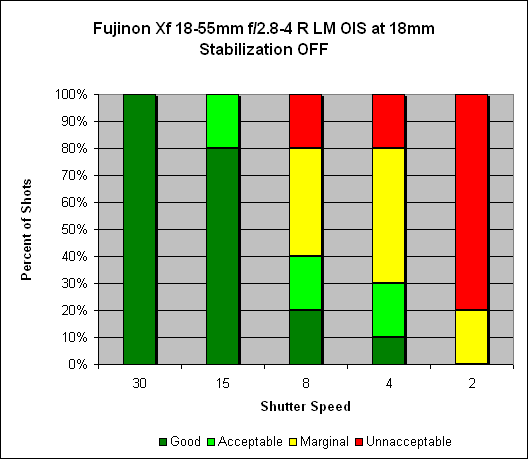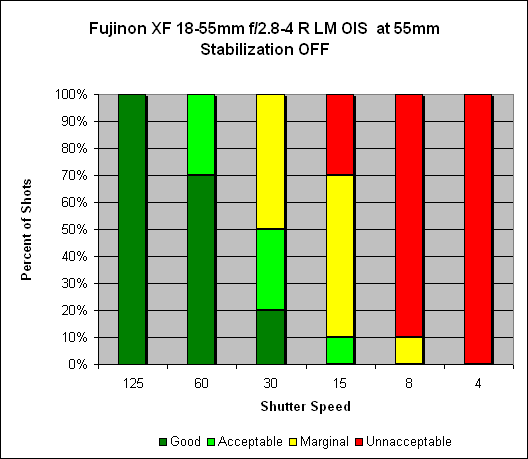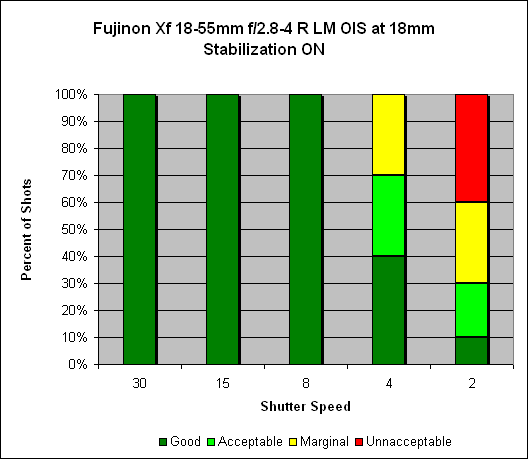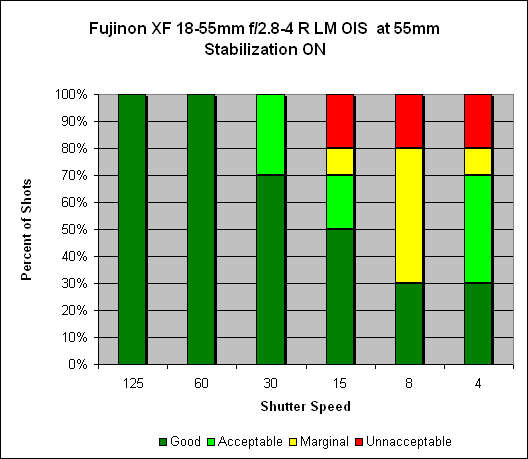Most people tend to think of image stabilization as being mainly for telephoto lenses. While it's true that their longer focal lengths tend to magnify the effects of camera shake, image stabilization can provde a very useful assist at wider angle focal lengths as well; anyone who's ever tried to blur the image of a waterfall, while keeping the surrounding landsape tack-sharp knows exactly what I'm talking about.
At 18mm, we see about one and a half stops of image stabilization. We would expect the lens to offer fairly stable results at 1/15 of a second, without stabilization enabled, and that's what we see: 80% of hand-held, unstabilized shots are sharp at this speed. With OIS enabled, Rob got sharp images at 1/8 of a second, and 40% of his shots at 1/4 of a second were sharp.
 |
| Mouse over this chart to show results with IS activated. |
Zoomed in to 55mm, we see some image stabilization happening, but it's not as impressive as other manufacturers have been able to produce. Unstabilized, we would expect to see sharp images at 1/60 of a second, and that's the case: 70% of images shot at 1/60 of a second are sharp. With OIS enabled, there is some improvement: if it were as good as Fujifilm claims, we would see sharp images all the way through to 1/4 of a second, and we do, just not consistently - only about 30% of the time.
 |
| Mouse over this chart to show results with IS activated. |
One possible factor at play could be the small size of our test body, the X-E1. With the lens mounted on a larger camera such as the X-Pro1, we might see some slightly better performance.
IS systems tend to provide more benefit to less-stable shooters than very steady ones, so most users will see the same or greater amounts of shake reduction as we measured here. You can read more about our IS test methodology here: SLRgear IS Test Methodology, v2.

